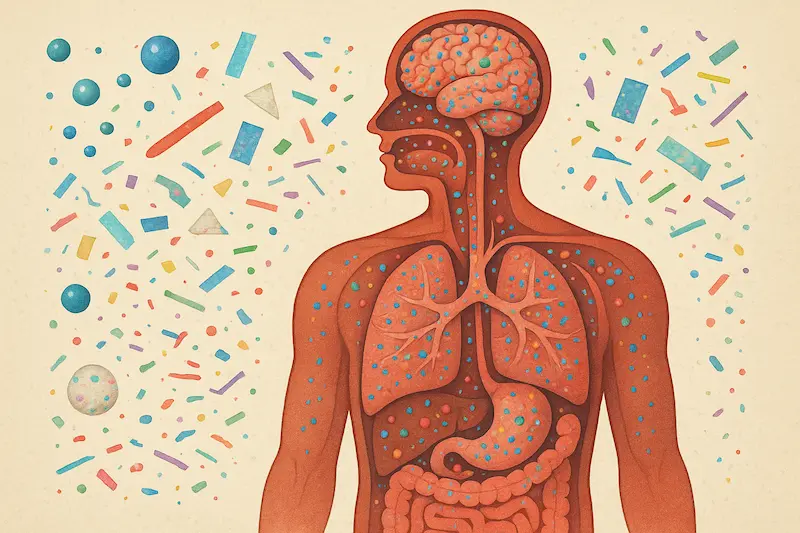Microplastics Are Everything: Now Both Inside and Out
Published:
From Austrian Toilets to the Brain — How Plastic Fragments Have Conquered the Human Body

When Austrian scientists discovered microplastics in stool samples from people in various countries back in 2018, the world reacted with mild skepticism: as if to say, there are plenty of things we can’t digest. However, since then, plastic has staged a true invasion of the human body — it’s now found not only in the intestines, but also in the blood, lungs, kidneys, heart, and recently — even in the brain. If anyone still dreamed of total unity with nature, here it is: unity with the polymer products of civilization.
Scientists note that our acquaintance with microplastics is becoming ever more intimate. These particles have even been found in the placenta and breast milk, which clearly suggests: the newest family member will arrive already equipped with a basic plastic starter kit. Perhaps manufacturers will soon advertise bottles “with natural microplastics, just like mom’s.”
And although scientists have yet to fully determine exactly what microplastics do to the body, the trend is alarming. According to some data, the number of particles entering the human body is only increasing. Maybe in a couple of generations, people will start glowing in the dark, saving on street lighting? Or, on the contrary, we’ll evolve into a new biological species — Homo plasticus.
One way or another, if plastic used to be a symbol of eternity and landfills, it has now become an integral part of ourselves. And that’s no longer a metaphor.
Parmegano
Author